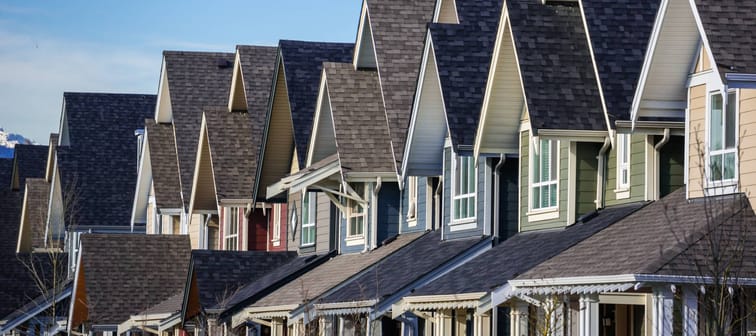Supply vs. prices
Because prices are ultimately dictated by buyers and not some objective market mechanism, there is no formula to predict the impact of shrinking supply. But its effect on prices is on full display in Canada.
At the end of January, the number of homes for sale in Ontario, population 14.9 million and counting, was a ghastly 9,434 — 71.4% below the 10-year average for the month.
The average home price in Ontario was a record-smashing $998,629 in January. That’s 25.6% higher than it was just a year before. Supply in most Ontario markets hasn’t been this low in more than 30 years.
The story is essentially the same in British Columbia, where there were only 13,000 properties left on the market at the end of January. The British Columbia Real Estate Association says a “healthy level” of resale listings for the province is closer to 40,000.
No surprise, then, that the average price in B.C. cruised past the million-dollar mark in January, rising 23.5% year over year to hit $1,042,169.
At this stage in the market cycle, it’s important to keep in mind that any property selling for over $1 million in Canada, no matter how small it may be, requires buyers to come up with a 20% down payment if they intend to get a mortgage. How many renters do you know with $200,000 in the bank?
The supply-demand crunch isn’t just a big-market problem, either. Alberta, Saskatchewan and New Brunswick have all seen double-digit declines in homes for sale, while prices jumped.
Even Newfoundland and Labrador, one of the country’s slowest housing markets prior to the pandemic, is now hurting for supply. Active listings were down 39% compared to January 2021.
The 11.9% annual increase seen in Newfoundland’s benchmark price is modest compared to what’s happening in Ontario and B.C., but it’s a hard pill to swallow for a province with such persistent and widespread employment and demographic challenges.
More from Money.ca
- Cut your gas bill gas bill by up to 20% with these simple steps
- Barry Choi: How Canada's new COVID-19 rules will affect the cost of travel
- Will Ontario's plan for 1.5 million new homes change anything?
Empower Your Investments with Q Trade
Discover Q Trade's award-winning platform and take control of your financial future. With user-friendly tools, expert insights, and low fees, investing has never been easier.
Start Trading TodayIs there a solution?
Only one. Start building more homes immediately.
Buyers in Ontario and B.C. are already paying the price — quite literally — for their municipalities’ counterintuitive approach to housing development: underbuilding while the population rapidly grows.
For provinces like Alberta, Nova Scotia and Quebec to avoid the same fate, stakeholders need to start holding housing authorities’ and local governments’ feet to the fire to encourage more streamlined development processes that result in more robust housing supply and greater density.
A similar approach, long overdue, is finally gaining traction in Ontario. The Ontario Housing Affordability Task Force recently shared a report containing 55 recommendations for improving housing supply in the province, many of them concerned with reducing red tape and delays at the local level.
If implemented, the report’s authors say the recommendations could help create 1.5 million housing units in Ontario over the next ten years.
Phil Soper, president of real estate brokerage network Royal LePage, says Ontario’s strategy could become a model for other provinces.
“If this catches on across the country, and the federal government and municipalities get behind it, and we have some consensus that it’s the direction the country has to go, it's going to be a brighter future for Canadians,” he says.
But the consensus Soper has in mind could be the sticking point.
Building more than a million new housing units will mean more high-density properties — condo towers and townhouse developments — in traditionally single-family neighbourhoods, whose long-term residents can be resistant to change.
Buyers who grew up in spacious homes will also have to accept a future in which they raise their growing families in much smaller properties.
It’s safe to say not every homebuyer or long-term homeowner concerned with the “character” of their neighbourhood will be comfortable making such sacrifices. But if supply keeps dropping in market after market, they won’t have much of a choice.
Communities, however, have a stark choice before them: Build now or suffer later.
Sponsored
Trade Smarter, Today
With CIBC Investor's Edge, kick-start your portfolio with 100 free trades and up to $4,500 cash back.







